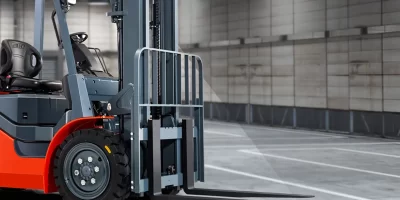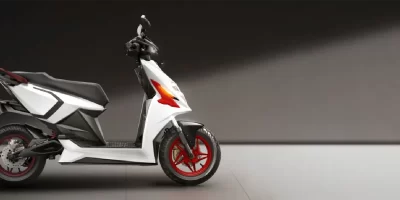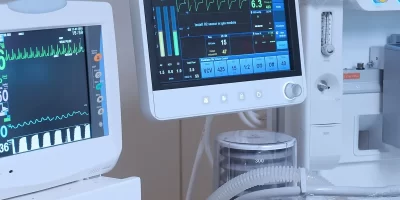Home About Us EVENTS & NEWS How does a smart bms work-Comprehensive Guide.
How does a smart bms work-Comprehensive Guide.
How does a smart bms work-Comprehensive Guide.
Battery Management Systems (BMS) are now a crucial component of contemporary battery technology, particularly in sectors like consumer electronics, renewable energy storage, and electric vehicles (EVs). In order to guarantee the longevity, safety, and effectiveness of batteries—especially lithium-ion batteries—a Battery protection board plays a critical role. However, how does a smart BMS operate exactly? We’ll go over the fundamental duties of a smart BMS, its operation, and its importance in battery-powered applications in this extensive overview.
This News will continue in the order of the following questions:
What is a Battery Management System (BMS)?
What is the function of a BMS?
Why is a BMS Essential?
AYAA battery protection board new product(7S-24S 300A).
Let’s get started with the first question
What is a Battery Management System ?
An electronic device called a battery management system (BMS) keeps track of and regulates the performance of rechargeable batteries. It keeps batteries from overcharging, deep discharge, and overheating, ensuring that they run within safe bounds. In devices like electric vehicles (EVs), solar storage systems, and uninterruptible power supplies (UPS), Battery protection board systems are frequently utilized for battery safety and overall battery performance.
What is the function of a BMS?
1. Monitoring Battery Voltage
Monitoring the voltage of each individual cell in a battery pack is one of a BMS’s primary duties. A Battery protection board system makes sure that every battery cell is functioning within a safe voltage range because battery cell voltage levels can fluctuate significantly. To avoid damaging the electrical product, the BMS will either sound an alert or immediately shut down if the voltage of any battery cell rises above a predetermined threshold.
2. Current Control and Management
The current entering and leaving the battery is automatically monitored by the Battery protection board. It prevents the battery from being overcharged or overdischarged, which can both reduce battery life or pose safety hazards. The Battery protection board system measures the current entering and leaving the battery using current sensors, then modifies the charging procedure as necessary.
3. Temperature Regulation
Another crucial element in the BMS’s performance is battery temperature. Because lithium-ion batteries are sensitive to temperature changes, excessively high or low temperatures can reduce battery life or result in serious malfunctions. Temperature sensors are integrated into the BMS to track battery temperature and start heating or cooling systems to preserve ideal operating conditions.
4. State of Charge (SOC) and State of Health (SOH) Monitoring
Similar to a car’s fuel gauge, the BMS determines the status of charge (SOC), which shows how much charge is left in the battery. Additionally, it monitors the battery’s state of health (SOH), which shows how well it is doing overall and how long it can keep a charge. The Battery protection board system gives customers vital information to assist them in determining whether to charge or replace batteries by continuously assessing SOC and SOH.
5. Balancing Cells
It is crucial to make sure that every cell in a battery pack is balanced, meaning that each cell should have the same voltage level. The battery may deteriorate if certain cells are overcharged or overdischarged due to an imbalance in the cells. The BMS uses two techniques to accomplish cell balancing: active balancing, which involves redistributing energy among cells, and passive balancing, which involves dissipating surplus energy as heat.
6. Safety and Protection Features
To guard against harm to the battery or the environment, the smart BMS offers several levels of protection. It offers defenses against:
1. Overvoltage: Prevents charging the battery above its safe voltage threshold.
2. Undervoltage: Prevents excessive discharge of the battery, which can harm the cells.
3. Overcurrent: Guards against excessive current that can lead to fires or overheating of the battery.
4. Short Circuit Protection: To avoid harm in the event of a short circuit, the battery is promptly disconnected.
Why is a BMS Essential?
The BMS is essential to preserving the battery pack’s longevity, performance, and safety. The absence of a BMS increases the battery’s vulnerability to issues including deep drain, overcharging, and overheating. By ensuring that the battery runs within its ideal range, the Battery protection board prolongs the battery’s lifespan and enhances performance.
For instance, by preserving battery health, the BMS in electric cars helps to improve driving range, speed up charging, and save maintenance expenses. The BMS in solar energy storage systems makes sure that the battery’s energy is used more effectively and securely.
AYAA battery protection board new product(7S-24S 300A battery Pack).
AYAA Technology Co., Ltd., Shenzhen. We are pleased to present our newest high-performance battery protection plate (BMS), which is intended for high-power applications such as tricycles, electric two-wheelers, and golf carts.

1. Compatible with 7S-24S battery packs
2. Emission current processing up to 300A
3. More sophisticated safeguards against overcharging, overdeclining, overcurrent, and temperature regulation
4. Enhanced for lithium battery longevity and safety
With 20 years of experience with battery management systems (BMS), AYAA offers dependable and creative energy solutions that are regarded favorably by international partners.
Conclusion
A battery management system (smart BMS) is more than just an accessory for modern batteries. It is essential for safe and effective use, and it helps batteries last longer.
A BMS keeps the battery safe and helps it work well. It does this by watching its voltage, current, temperature, and charge level all the time. A Battery protection board system is a crucial part of battery-powered technology, whether it is found in consumer devices, renewable energy systems, or electric cars.
1.What is the BMS system of a battery?
A battery management system (BMS) is a technology that monitors a battery pack. A battery pack is made up of battery cells arranged in a row and column. The BMS helps deliver a specific range of voltage and current. It does this for a set amount of time under expected load conditions.
2.What is the function of battery management system (BMS)?
Generally speaking, a battery management system is an electronic control unit that manages and keeps an eye on a battery’s performance throughout charge and discharge. Furthermore, the battery management system is in charge of establishing connections with other electronic devices and sharing the required battery parameter data.
3.Why is BMS required?
Through constant monitoring of the SOC, SOH, and other critical parameters, the BMS regulates battery operations within the optimal range. To prolong the battery’s useable life, this means preventing deep discharges and managing the charge cycles to lessen capacity loss and degradation over time.
4.What is the difference between a BMS and an active balancer?
A BMS extends the life of your valuable battery by controlling and monitoring it at the cell level, disconnecting the entire battery in the event of an overvoltage or undervoltage. Your batteries are simply balanced by an active balancer, which transfers energy from a higher-voltage cell to a lower-voltage cell.
News Recommend
-
How does AYAATECH BMS work in E-scooters
01/16/2025 -
2024 battery show in Detroit,USA.
10/08/2024 -
2024 Electronica in Munich, Germany
01/08/2025













